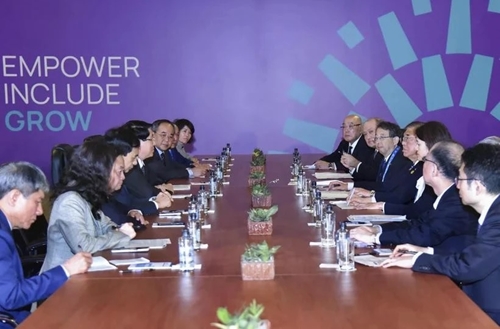According to the report, Vietnam occupies a key geopolitical location, bordering vital maritime routes in the East Sea (South China Sea) and sharing a long land border with China. With the third-largest population in Southeast Asia and a rapidly growing middle class, Vietnam is seen as a promising market.
    |
 |
|
At a meeting between Vietnamese State President Luong Cuong and Japanese Prime Minister Shigeru Ishiba in Lima, Peru, on November 16, 2024, on the sidelines of the APEC Economic Leaders' Week |
The Bluebook noted since the outbreak of the COVID-19 pandemic, the trend of diversifying supply chains has prompted many foreign companies, including Japanese firms, to relocate their production bases to Vietnam. The country aims to become a developed nation by 2045 and achieve carbon neutrality by 2050, while actively promoting green transformation (GX) and digital transformation (DX). It is also focused on ensuring stable economic growth through macroeconomic stabilization, inflation control, foreign investment attraction via infrastructure development, and investment climate improvement.
Vietnam’s economic growth, which slowed to around 2% in 2020–2021 due to strict COVID-19 lockdown measures, rebounded strongly with an 8.02% expansion in 2022 and 5.05% in 2023, said the Japanese foreign policy report.
The Vietnam-Japan diplomatic relations were established on September 21, 1973. In 2023, marking the 50th anniversary of relations, the two nations elevated their ties to a "Comprehensive Strategic Partnership for Peace and Prosperity in Asia and the World," accompanied by over 500 commemorative events. High-level exchanges have been held regularly under this new partnership.
Regarding the Vietnamese community in Japan, the Bluebook highlighted a steady increase in the number of Vietnamese nationals, mainly technical interns, from about 40,000 in 2011 to over 600,000 by mid-2024, making them the second-largest foreign community in Japan after the Chinese.
Source: VNA